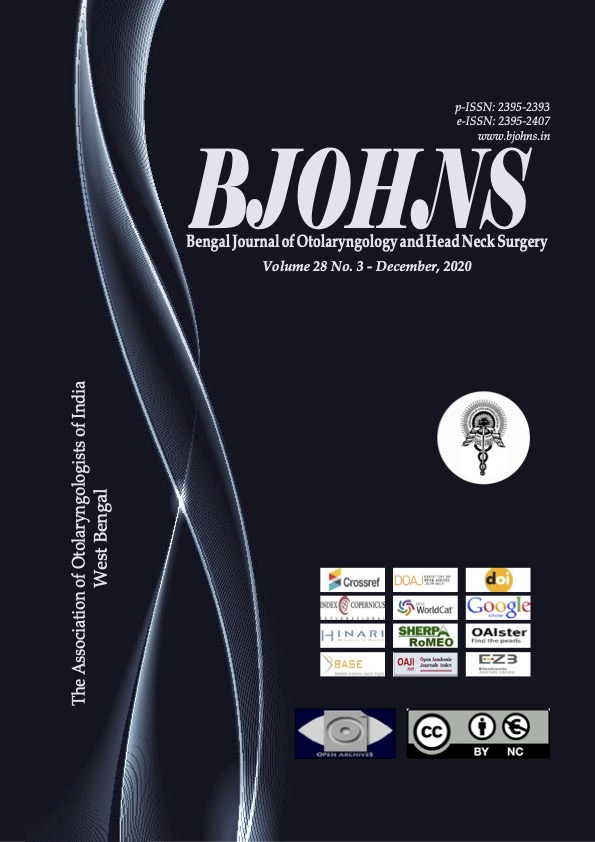Foreign Body Nose: An Unusual Presentation
Main Article Content
Abstract
Introduction
This is a very interesting case of retained homicidal foreign body in the nose in contrast to most of the foreign bodies which are accidental.
Case Report
A 27 year old male presented to ENT emergency with alleged history of assault over face with sharp object following which patient developed nasal bleed. On examination vertical laceration of approximately 8 cm in length was present along left naso-orbital groove extending superiorly from medial canthus of left eye and inferiorly to nasal alar cartilage. On anterior rhinoscopy a metallic foreign body was seen in both nasal cavities, which appeared to be crossing from left to right side piercing the nasal septum. Foreign body was removed via open approach.
Discussion
Penetrating maxillofacial injury with foreign body impaction are less common. High index of suspicion is required in diagnosing these cases. Radiological intervention should be done to get idea of exact location and extent of foreign body. Lateral rhinotomy is a useful approach in removing these foreign bodies.
Article Details

This work is licensed under a Creative Commons Attribution-NonCommercial 4.0 International License.
References
Rybojad B, Niedzielski A, Niedzielska G, Rybojad P. Risk factors for otolaryngo- logical foreign bodies in Eastern Poland. Otolaryngol Head Neck Surg. 2012; 147:889-93
Dodson KM, Bridges MA, Reiter ER. Arch Otolaryngol Head Neck Surg. 2004;130:985-8
Macan D, Cabov T, Kobler P, Bumber Z. Inflammatory reaction to foreign body (amalgam) in the maxillary sinus misdiagnosed as an ethmoid tumor. Dentomaxillofac Radiol. 2006; 35(4):303-6. doi: 10.1259/dmfr/42499904. PMID: 16798931
Yousefi J, Mobasher Jannat A, Ajudani R. Penetrating nose and maxillary sinus injury with a metal part of a military gun. J R Army Med Corps. 2016; 162(2):137-8. doi: 10.1136/jramc-2015-000604. Epub 2016 Jan 14. PMID: 26767594
Ince B, Dadaci M, Altuntas Z. Seventeen-year-old asymptomatic foreign body in the nose: Case report. Int Med J Sifa Univ. 2014;1:15-7.

